In this article, we will talk about an issue where the Windows laptop battery icon shows charging, when not plugged in. When we connect a laptop to the charger, the battery icon shows the charging status. This charging sign disappears when we turn off the power supply or disconnect the charger. However, in this case, the laptop battery continuously shows the charging sign even when the charger is not plugged in.
![]()
Laptop battery icon shows charging when not plugged in
Use the following fixes if your Windows laptop battery icon shows that it is charging when it is not plugged in at all:
- Perform a hard reset
- Run Power Troubleshooter
- Change your power plan or reset the power plan to the default
- Disable Fast Startup
- Reinstall the battery driver
- Update BIOS and chipset driver
- Run a battery test
Below, we have explained all these fixes in detail.
1] Perform a hard reset
The problem might be occurring due to the residual charge in capacitors. If this is the case with you, performing the hard reset will fix this problem. The following instructions will guide you on this:
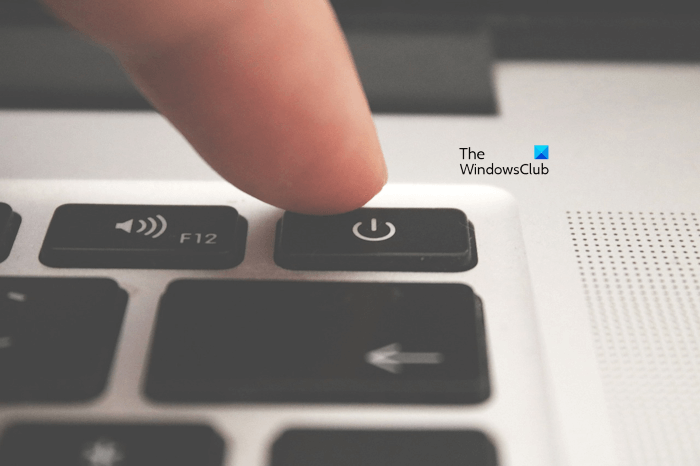
- Completely turn off your laptop.
- Remove the power adapter and disconnect all peripherals.
- Remove the laptop battery. Skip this step if your laptop has a built-in non-removable battery.
- Press and hold the power button for 30 to 45 seconds.
- Now, turn on your laptop.
The above steps will drain out the residual charge from the capacitors. Check if the problem persists.
2] Run Power Troubleshooter
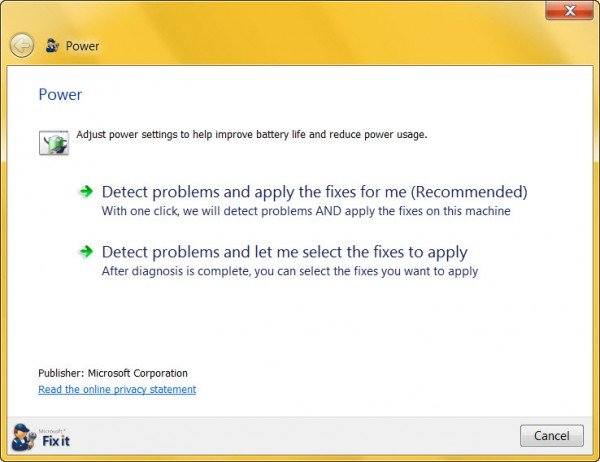
The next step is to run the Power Troubleshooter. It is an automated tool in Windows computers that troubleshoots and fixes power-related issues.
3] Change your power plan or reset the power plan to the default
The problem might also be occurring due to the currently active power plan. We suggest you change your power plan. If you see only the Balanced power plan in the Control Panel, you can restore the missing default power plans by running the required commands in the administrator Command Prompt window.
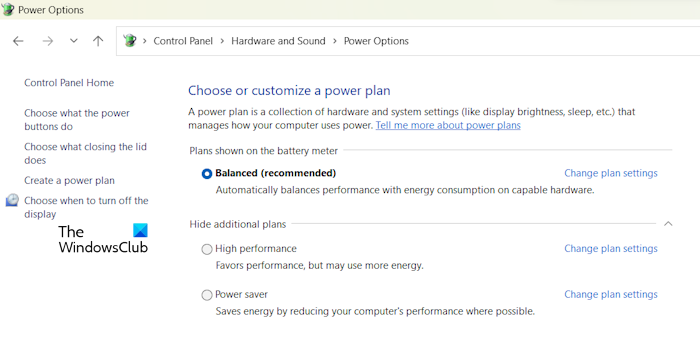
You can also create a custom power plan. After restoring the default power plans or creating a new one, switch the power plan and restart your laptop. See what happens. If the commands to restore the missing default power plans do not work, the Modern Standby S0 mode might be active on your laptop. Disable this mode to restore the missing default power plants.
4] Disable Fast Startup
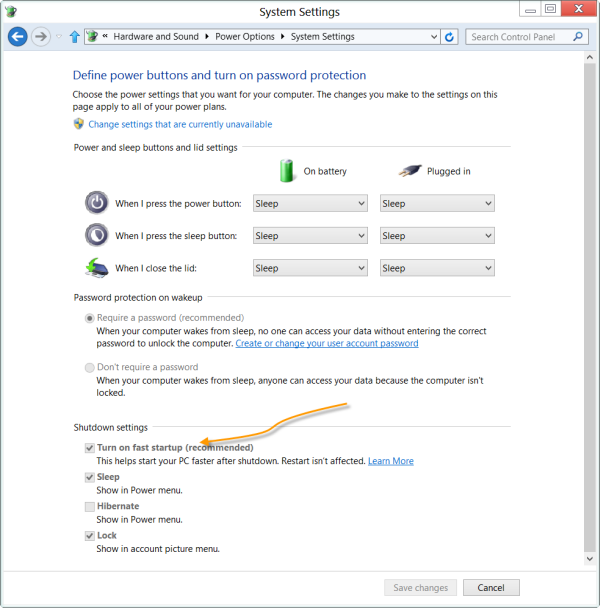
Fast Startup is a feature in Windows 11/10 computers that allows the computers to boot faster. If your computer supports hibernation, the Fast Startup is enabled by default. Sometimes, this feature causes issues with the Windows machine. Therefore, Fast Startup might be responsible for this problem. We suggest you check and disable Fast Startup (if it is enabled).
5] Reinstall the battery driver
Another fix that you can try is reinstalling the battery driver. Your battery driver might have malfunctioned, so your laptop is not thinking that the charger is connected. Reinstalling the battery driver can fix this issue. You can use the Device Manager to reinstall the battery driver.
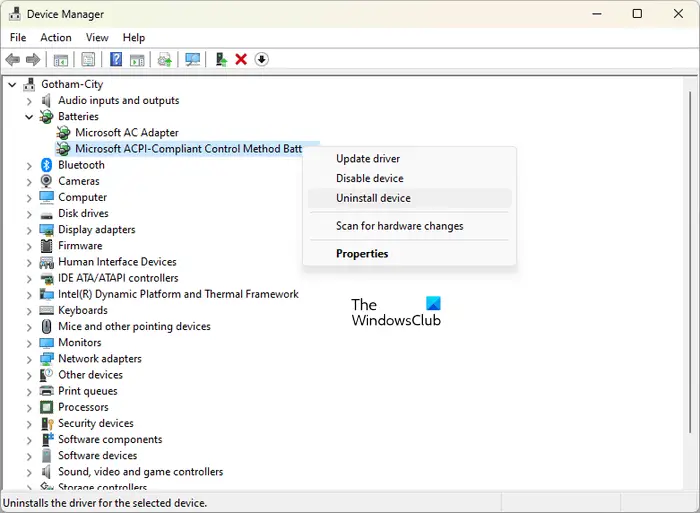
Open the Device Manager and look for the battery driver. Once you find it, uninstall it and restart your laptop. Windows will automatically install the missing driver on restart. Hopefully, it should work.
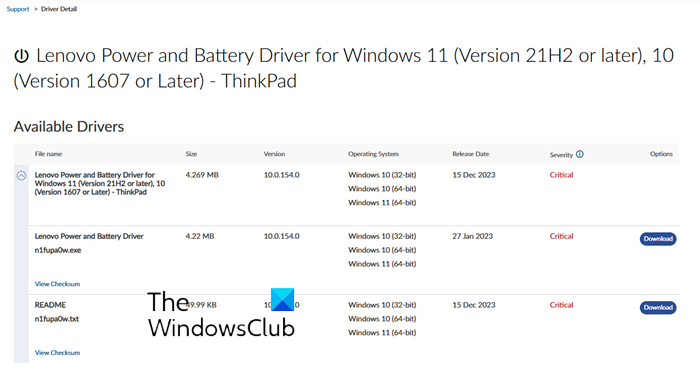
If not, you can download and install the battery driver from the official website of your laptop manufacturer (if available). You can also visit the Microsoft Update Catalog website.
6] Update BIOS and chipset driver
Outdated BIOS and the chipset driver are also the possible causes of this issue. Visit your laptop manufacturer’s official website and check if an updated version of BIOS is available. If yes, download it and install the update.
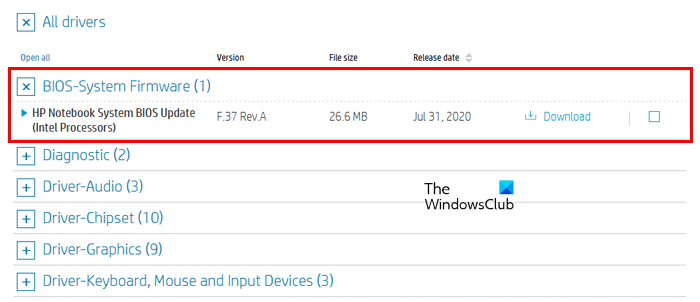
If your BIOS is already up to date, you can try clearing the CMOS or resetting the BIOS to the default settings. Before you do this, note down the current BIOS settings to restore all the settings after resetting the BIOS. To clear the CMOS, you have to remove the CMOS battery, wait for a few minutes, and then reinstall it. This step will also reset the BIOS.
We also suggest you update your chipset driver.
7] Run a battery test
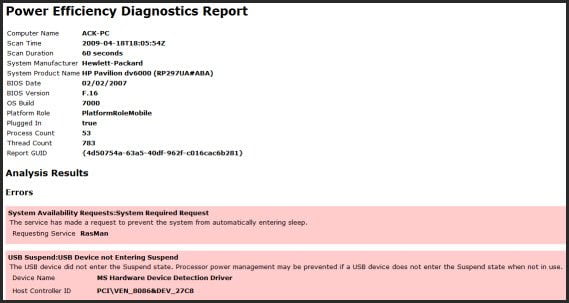
The problem might also be associated with your laptop battery. You can test your laptop battery health by using third-party tools. Windows computers also have a built-in tool that allows users to generate battery health reports. If there is a problem with your laptop battery, consider replacing it.
I hope this helps.
Why is my laptop showing charging icon but not charging?
If your laptop is showing charging but not charging, your laptop battery might be faulty. However, the problem can also be associated with your laptop charger. If you are using another laptop charger, it might be incompatible with your laptop. Perform a hard reset and see if the problem persists.
Read: Battery shows being charged but battery percentage not increasing.
Why is my laptop blinking instead of charging?
If the laptop charger indicator keeps blinking but the laptop is not charging, the problem might be with your laptop battery or the charger. You can try performing a hard reset and see if it works.
Leave a Reply